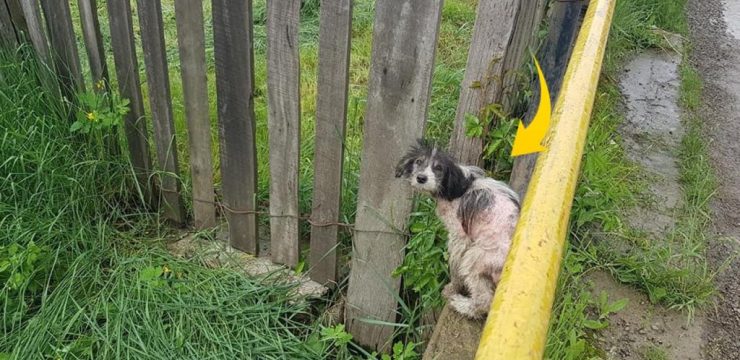It was supposed to be just another quiet night on an empty Illinois highway—a familiar rhythm of headlights gliding through the dark, the hum of engines, and the calm of routine patrol. Then came the flash of blue lights, a car easing onto the shoulder, and a state trooper stepping out with calm professionalism. The stop was for something simple: a seatbelt violation. The expectation was that it would end like thousands of others do—quickly, safely, and without incident.

But within minutes, that calm gave way to chaos. What began as an ordinary roadside encounter spiraled into a struggle that left one officer injured, a driver in custody, and an entire community asking how such a simple stop could have gone so wrong.
From Routine Procedure to Rising Tension
Traffic stops are among the most common interactions between civilians and law enforcement. They occur thousands of times each day across the country, usually without incident. Yet they remain one of the most unpredictable and emotionally charged encounters in policing. When something goes wrong, the impact echoes far beyond the flashing lights—it affects public trust, shapes perceptions, and reignites long-standing debates about authority and accountability.
That unpredictability was on full display that night in Illinois. What started as a routine seatbelt check soon became anything but.
Later-released bodycam and dashcam footage revealed how calm the exchange began. The trooper approached the car with measured courtesy, explaining the reason for the stop. The driver, later identified as Brandon, appeared composed but distant. He wasn’t wearing his seatbelt—hence the lawful stop. When the officer politely asked for identification, Brandon hesitated.
“All You Had to Do Was Cooperate”
At first, their words were steady, almost routine. The officer maintained a calm, even tone, clearly explaining the request. But Brandon began to push back, questioning the stop, the officer’s authority, and whether he was required to provide identification at all. His voice wasn’t raised, but his refusal was firm.
The trooper tried to keep things civil. “There’s no reason to lie to us when we’re just trying to help,” he said. “You could’ve been long gone by now if you’d just handed over your ID.”
Still, Brandon refused.
Moments later, the situation shifted. The trooper moved to detain him. What followed unfolded in seconds—a tangle of movement, shouted commands, and mounting panic. A simple traffic citation had turned into a physical confrontation beside the highway, illuminated only by the car’s headlights and the officer’s bodycam.
The Fallout: Sirens, Hospitals, and Courtrooms
When the struggle ended, the trooper was injured and transported to a nearby hospital. Brandon was arrested on the scene. Emergency vehicles quickly crowded the shoulder, their red and blue lights cutting through the night.
By morning, the story had spread across Illinois. News stations ran the footage, social media buzzed, and the public response was swift. Brandon now faces charges including obstruction and battery of a peace officer—a steep fall from what began as a minor seatbelt violation.
Community Reaction: Debate and Division
As headlines spread, so did opinions. Some people viewed the video and concluded that the driver’s resistance created unnecessary danger. Others saw it differently, questioning whether the officer could have avoided escalation altogether.
At town halls and online discussions, familiar questions surfaced:
“Why didn’t he just show his ID?”
“Couldn’t the officer have written the ticket and walked away?”
“Why are we still seeing these confrontations over minor traffic stops?”
There were no easy answers. The debate reflected a larger tension in American society—the fragile trust between citizens and those sworn to protect them. Each side saw a truth the other could not ignore: compliance and caution are vital, but so are accountability and restraint.
Lessons Beneath the Headline
Beyond the flash of news coverage, the Illinois traffic stop became a mirror reflecting broader issues—about authority, behavior, and the choices people make when tension rises. From that night, several key lessons stand out.
1. Compliance and Rights Can Coexist
Every driver has rights during a stop, including the right to question procedures respectfully. But refusal to follow lawful instructions can escalate risk fast. The roadside is not the courtroom; disputes belong before a judge, not in the middle of traffic. Compliance doesn’t mean surrender—it means prioritizing safety.
2. No Stop Is Truly “Routine”
For officers, even the simplest stop carries uncertainty. They never know what or whom they’re walking up to. Training prepares them for volatility, but human unpredictability—fear, anger, confusion—can upend any plan in seconds.
3. Rebuilding Trust Takes Consistency
Public trust in law enforcement, once fractured, takes time and effort to rebuild. It requires more than statements or policies—it calls for everyday transparency, empathy, and accountability. Respect flows both ways: from citizens toward officers and from officers toward those they serve.
4. Reform Is Evolution, Not Opposition
Calls for police reform are not about rejecting law enforcement. They’re about refining it—ensuring fairness and clarity for both sides of the badge. Real progress means improving training, communication, and community understanding so that safety is shared, not opposed.
A Stop That Wouldn’t Stay Simple
That night on the Illinois highway began with a missing seatbelt and ended with flashing lights, sirens, and unanswered questions. What should have been a five-minute exchange became a collision of rights, resistance, and perception. The courts will determine what was legal or not—but the deeper lesson doesn’t need a verdict.
Everyday interactions, however small, hold the potential to define how we see one another. Whether we wear the badge or sit behind the wheel, our choices—to listen, to stay calm, to de-escalate—decide how the moment ends.
In a world already thick with tension, maybe the truest act of courage isn’t confrontation, but calm. The kind that diffuses, rather than ignites. The kind that keeps a quiet night on an Illinois highway from turning into tomorrow’s headline.





